Osteoporosis in Older Adults: What Every Caregiver Should Know



Osteoporosis is a silent but serious condition that affects millions of older adults, making bones fragile and more susceptible to fractures. For caregivers, understanding osteoporosis and knowing how to support loved ones is essential for maintaining their safety, independence, and quality of life.
Whether you’re a family member or a professional caregiver, this guide will help you navigate the challenges of osteoporosis care and explore how the right support can improve your loved one's wellbeing.
Understanding Osteoporosis in Older Adults
Osteoporosis is characterized by decreased bone density, which leads to brittle bones that break easily, even from minor falls or, in some cases, simple daily activities. The risk increases with age, particularly for women after menopause, but men are also vulnerable.
Often, osteoporosis is only diagnosed after a fracture occurs, but bone density tests can help with early detection, especially for women over 65 and men over 70.
Common Risk Factors
Advanced age
Family history of osteoporosis or fractures
Low body weight
Smoking and excessive alcohol use
Certain medications (like steroids)
Low calcium and vitamin D intake
Prevention and Protection
The primary goal for caregivers is preventing falls and fractures, which can have life-altering consequences for older adults with osteoporosis.
Creating a Safe Environment
Remove tripping hazards such as loose rugs, clutter, and extension cords.
Install grab bars in bathrooms and handrails on stairs.
Ensure all areas are well-lit, especially pathways to the bathroom at night.
Encourage the use of assistive devices like walkers or canes, ensuring they are properly fitted.
An occupational therapist can be a useful source of information for how to make your loved one's home safe and functional while maintaining maximal independence.
Fall Prevention Strategies
Keep walkways clear of debris, ice, or leaves.
Provide non-slip footwear.
Use medical alert devices with fall detection for immediate assistance if needed.
Supporting Physical Health: Exercise and Nutrition
Exercise for Bone Health
Regular, weight-bearing exercise is critical for maintaining bone strength and overall health. Activities such as walking, dancing, or gentle resistance training help stimulate bone growth and improve balance, reducing the risk of falls. Exercise routines should be tailored to individual abilities and limitations, ideally under the guidance of a healthcare professional. Professional caregivers can be useful in helping seniors stay active—and safe.
Diet and Supplementation
A balanced diet rich in calcium and vitamin D is essential for bone health. Encourage the consumption of:
Dairy products (milk, cheese, yogurt)
Leafy green vegetables
Fortified cereals and juices
Fatty fish (like salmon or sardines)
Since many older adults may not get enough vitamin D from food or sunlight, supplements may be necessary, but always under medical supervision to avoid complications.
Caregivers can help plan and prepare nutritious meals, monitor supplement intake, and coordinate with healthcare providers for optimal dietary management. (You can read more about what a caregiver might do here).
Medication Management
Many older adults with osteoporosis are prescribed medications to slow bone loss or increase bone density (such as bisphosphonates). Caregivers play a crucial role in:
Ensuring medications are taken as prescribed
Monitoring for side effects
Organizing pillboxes and setting reminders
Coordinating with healthcare providers for refills and adjustments
Emotional and Social Support
Living with osteoporosis can be emotionally challenging, leading to anxiety, depression, or social withdrawal. Caregivers should:
Offer companionship and encourage social interaction with friends and family
Support participation in enjoyable activities
Watch for signs of emotional distress and seek professional help if needed
Regular Medical Care and Monitoring
Routine doctor visits are essential for monitoring osteoporosis progression and adjusting treatment plans. Caregivers should:
Schedule and provide transportation to appointments
Keep records of medical visits and changes in treatment
Communicate any concerns or changes in health to healthcare providers
The Value of Professional In-Home Care
While family caregivers play a vital role, professional in-home care services like Clara Home Care can provide comprehensive support:
Assistance with exercise and mobility
Medication management
Meal planning and preparation
Emotional support and companionship
Coordination with healthcare providers
By partnering with a trusted provider, families can ensure their loved ones receive expert, compassionate care tailored to their unique needs, allowing them to age safely and comfortably at home. (See here for more on the importance of aging in place).
Conclusion
Caring for an older adult with osteoporosis requires vigilance, empathy, and a proactive approach to safety, nutrition, and emotional well-being. By understanding the risks and implementing practical strategies, caregivers can make a profound difference in their loved one’s quality of life.
If you are caring for someone with osteoporosis, remember: you are not alone. With the right knowledge, resources, and support, you can help your loved one thrive despite the challenges of osteoporosis.
For those seeking additional support, Clara Home Care offers specialized in-home care solutions designed to empower seniors to live safely, independently, and with dignity. Get in touch with us to learn more about how we can help you and your loved one.
Osteoporosis is a silent but serious condition that affects millions of older adults, making bones fragile and more susceptible to fractures. For caregivers, understanding osteoporosis and knowing how to support loved ones is essential for maintaining their safety, independence, and quality of life.
Whether you’re a family member or a professional caregiver, this guide will help you navigate the challenges of osteoporosis care and explore how the right support can improve your loved one's wellbeing.
Understanding Osteoporosis in Older Adults
Osteoporosis is characterized by decreased bone density, which leads to brittle bones that break easily, even from minor falls or, in some cases, simple daily activities. The risk increases with age, particularly for women after menopause, but men are also vulnerable.
Often, osteoporosis is only diagnosed after a fracture occurs, but bone density tests can help with early detection, especially for women over 65 and men over 70.
Common Risk Factors
Advanced age
Family history of osteoporosis or fractures
Low body weight
Smoking and excessive alcohol use
Certain medications (like steroids)
Low calcium and vitamin D intake
Prevention and Protection
The primary goal for caregivers is preventing falls and fractures, which can have life-altering consequences for older adults with osteoporosis.
Creating a Safe Environment
Remove tripping hazards such as loose rugs, clutter, and extension cords.
Install grab bars in bathrooms and handrails on stairs.
Ensure all areas are well-lit, especially pathways to the bathroom at night.
Encourage the use of assistive devices like walkers or canes, ensuring they are properly fitted.
An occupational therapist can be a useful source of information for how to make your loved one's home safe and functional while maintaining maximal independence.
Fall Prevention Strategies
Keep walkways clear of debris, ice, or leaves.
Provide non-slip footwear.
Use medical alert devices with fall detection for immediate assistance if needed.
Supporting Physical Health: Exercise and Nutrition
Exercise for Bone Health
Regular, weight-bearing exercise is critical for maintaining bone strength and overall health. Activities such as walking, dancing, or gentle resistance training help stimulate bone growth and improve balance, reducing the risk of falls. Exercise routines should be tailored to individual abilities and limitations, ideally under the guidance of a healthcare professional. Professional caregivers can be useful in helping seniors stay active—and safe.
Diet and Supplementation
A balanced diet rich in calcium and vitamin D is essential for bone health. Encourage the consumption of:
Dairy products (milk, cheese, yogurt)
Leafy green vegetables
Fortified cereals and juices
Fatty fish (like salmon or sardines)
Since many older adults may not get enough vitamin D from food or sunlight, supplements may be necessary, but always under medical supervision to avoid complications.
Caregivers can help plan and prepare nutritious meals, monitor supplement intake, and coordinate with healthcare providers for optimal dietary management. (You can read more about what a caregiver might do here).
Medication Management
Many older adults with osteoporosis are prescribed medications to slow bone loss or increase bone density (such as bisphosphonates). Caregivers play a crucial role in:
Ensuring medications are taken as prescribed
Monitoring for side effects
Organizing pillboxes and setting reminders
Coordinating with healthcare providers for refills and adjustments
Emotional and Social Support
Living with osteoporosis can be emotionally challenging, leading to anxiety, depression, or social withdrawal. Caregivers should:
Offer companionship and encourage social interaction with friends and family
Support participation in enjoyable activities
Watch for signs of emotional distress and seek professional help if needed
Regular Medical Care and Monitoring
Routine doctor visits are essential for monitoring osteoporosis progression and adjusting treatment plans. Caregivers should:
Schedule and provide transportation to appointments
Keep records of medical visits and changes in treatment
Communicate any concerns or changes in health to healthcare providers
The Value of Professional In-Home Care
While family caregivers play a vital role, professional in-home care services like Clara Home Care can provide comprehensive support:
Assistance with exercise and mobility
Medication management
Meal planning and preparation
Emotional support and companionship
Coordination with healthcare providers
By partnering with a trusted provider, families can ensure their loved ones receive expert, compassionate care tailored to their unique needs, allowing them to age safely and comfortably at home. (See here for more on the importance of aging in place).
Conclusion
Caring for an older adult with osteoporosis requires vigilance, empathy, and a proactive approach to safety, nutrition, and emotional well-being. By understanding the risks and implementing practical strategies, caregivers can make a profound difference in their loved one’s quality of life.
If you are caring for someone with osteoporosis, remember: you are not alone. With the right knowledge, resources, and support, you can help your loved one thrive despite the challenges of osteoporosis.
For those seeking additional support, Clara Home Care offers specialized in-home care solutions designed to empower seniors to live safely, independently, and with dignity. Get in touch with us to learn more about how we can help you and your loved one.
Osteoporosis is a silent but serious condition that affects millions of older adults, making bones fragile and more susceptible to fractures. For caregivers, understanding osteoporosis and knowing how to support loved ones is essential for maintaining their safety, independence, and quality of life.
Whether you’re a family member or a professional caregiver, this guide will help you navigate the challenges of osteoporosis care and explore how the right support can improve your loved one's wellbeing.
Understanding Osteoporosis in Older Adults
Osteoporosis is characterized by decreased bone density, which leads to brittle bones that break easily, even from minor falls or, in some cases, simple daily activities. The risk increases with age, particularly for women after menopause, but men are also vulnerable.
Often, osteoporosis is only diagnosed after a fracture occurs, but bone density tests can help with early detection, especially for women over 65 and men over 70.
Common Risk Factors
Advanced age
Family history of osteoporosis or fractures
Low body weight
Smoking and excessive alcohol use
Certain medications (like steroids)
Low calcium and vitamin D intake
Prevention and Protection
The primary goal for caregivers is preventing falls and fractures, which can have life-altering consequences for older adults with osteoporosis.
Creating a Safe Environment
Remove tripping hazards such as loose rugs, clutter, and extension cords.
Install grab bars in bathrooms and handrails on stairs.
Ensure all areas are well-lit, especially pathways to the bathroom at night.
Encourage the use of assistive devices like walkers or canes, ensuring they are properly fitted.
An occupational therapist can be a useful source of information for how to make your loved one's home safe and functional while maintaining maximal independence.
Fall Prevention Strategies
Keep walkways clear of debris, ice, or leaves.
Provide non-slip footwear.
Use medical alert devices with fall detection for immediate assistance if needed.
Supporting Physical Health: Exercise and Nutrition
Exercise for Bone Health
Regular, weight-bearing exercise is critical for maintaining bone strength and overall health. Activities such as walking, dancing, or gentle resistance training help stimulate bone growth and improve balance, reducing the risk of falls. Exercise routines should be tailored to individual abilities and limitations, ideally under the guidance of a healthcare professional. Professional caregivers can be useful in helping seniors stay active—and safe.
Diet and Supplementation
A balanced diet rich in calcium and vitamin D is essential for bone health. Encourage the consumption of:
Dairy products (milk, cheese, yogurt)
Leafy green vegetables
Fortified cereals and juices
Fatty fish (like salmon or sardines)
Since many older adults may not get enough vitamin D from food or sunlight, supplements may be necessary, but always under medical supervision to avoid complications.
Caregivers can help plan and prepare nutritious meals, monitor supplement intake, and coordinate with healthcare providers for optimal dietary management. (You can read more about what a caregiver might do here).
Medication Management
Many older adults with osteoporosis are prescribed medications to slow bone loss or increase bone density (such as bisphosphonates). Caregivers play a crucial role in:
Ensuring medications are taken as prescribed
Monitoring for side effects
Organizing pillboxes and setting reminders
Coordinating with healthcare providers for refills and adjustments
Emotional and Social Support
Living with osteoporosis can be emotionally challenging, leading to anxiety, depression, or social withdrawal. Caregivers should:
Offer companionship and encourage social interaction with friends and family
Support participation in enjoyable activities
Watch for signs of emotional distress and seek professional help if needed
Regular Medical Care and Monitoring
Routine doctor visits are essential for monitoring osteoporosis progression and adjusting treatment plans. Caregivers should:
Schedule and provide transportation to appointments
Keep records of medical visits and changes in treatment
Communicate any concerns or changes in health to healthcare providers
The Value of Professional In-Home Care
While family caregivers play a vital role, professional in-home care services like Clara Home Care can provide comprehensive support:
Assistance with exercise and mobility
Medication management
Meal planning and preparation
Emotional support and companionship
Coordination with healthcare providers
By partnering with a trusted provider, families can ensure their loved ones receive expert, compassionate care tailored to their unique needs, allowing them to age safely and comfortably at home. (See here for more on the importance of aging in place).
Conclusion
Caring for an older adult with osteoporosis requires vigilance, empathy, and a proactive approach to safety, nutrition, and emotional well-being. By understanding the risks and implementing practical strategies, caregivers can make a profound difference in their loved one’s quality of life.
If you are caring for someone with osteoporosis, remember: you are not alone. With the right knowledge, resources, and support, you can help your loved one thrive despite the challenges of osteoporosis.
For those seeking additional support, Clara Home Care offers specialized in-home care solutions designed to empower seniors to live safely, independently, and with dignity. Get in touch with us to learn more about how we can help you and your loved one.
More about senior health
More about senior health


Peace of Mind: How Meditation Supports Seniors and Their Caregivers



Lowrie Hilladakis


Why Aging in Place Is the New Reality for Most Baby Boomers



Clara Editorial Team


Warning Signs Of Vision Loss In Seniors—And What To Do Next



Clara Editorial Team


“They Were Talking to Each Other, But Not to Me”: Understanding the Patient Experience During Hospital-to-SNF Transitions



Clara Editorial Team


Talking About Therapy: How to Normalize Mental Health Support with Aging Parents



Lowrie Hilladakis


Stroke Awareness Month: Navigating Recovery After the Crisis



Clara Editorial Team
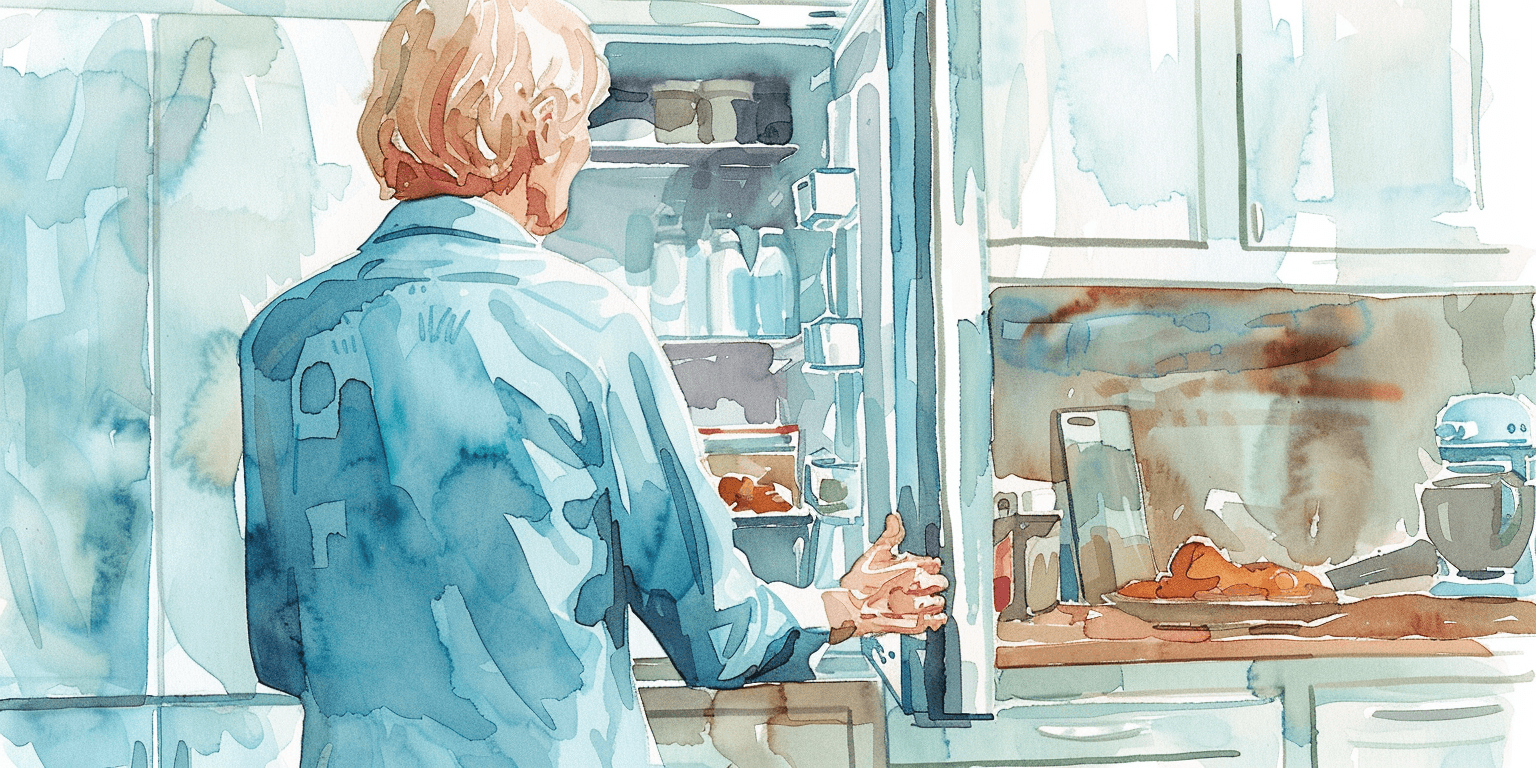

Digestive Health Tips for Seniors: Why It’s Often Overlooked



Clara Editorial Team
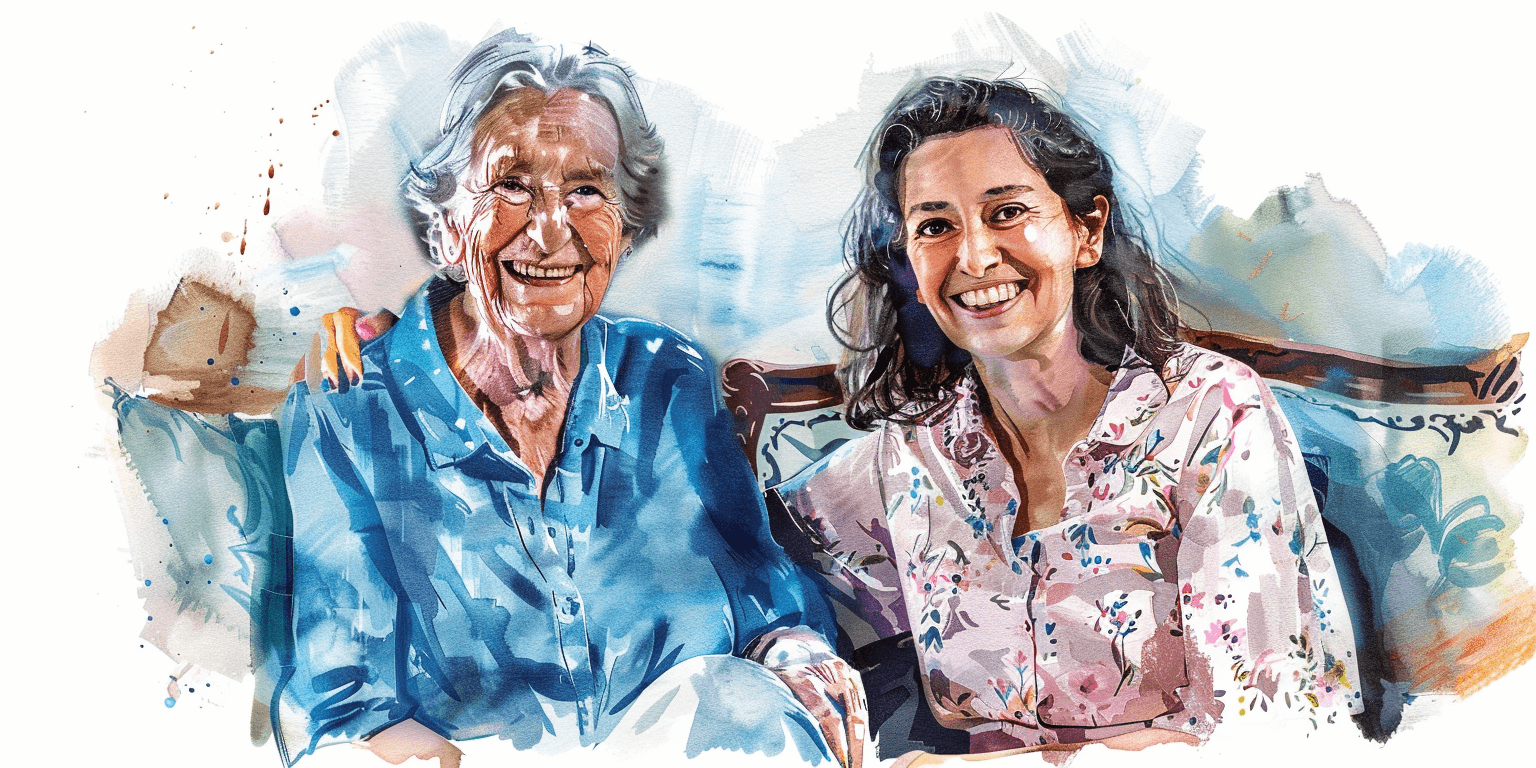

What Is A Care Manager?



Camille Christie
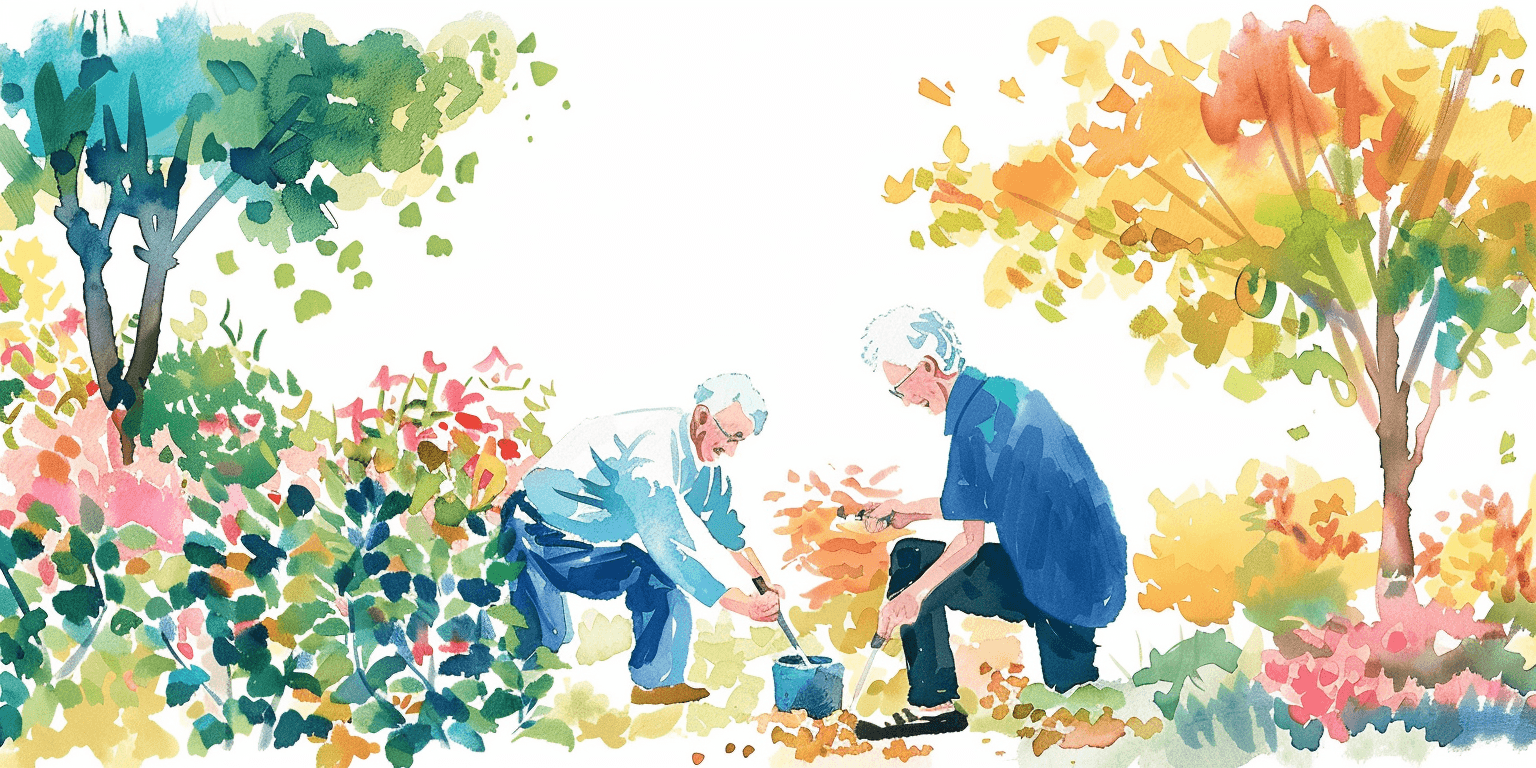

The Physical and Mental Health Benefits of Gardening for Seniors



Quynh Thi Pham, OTS
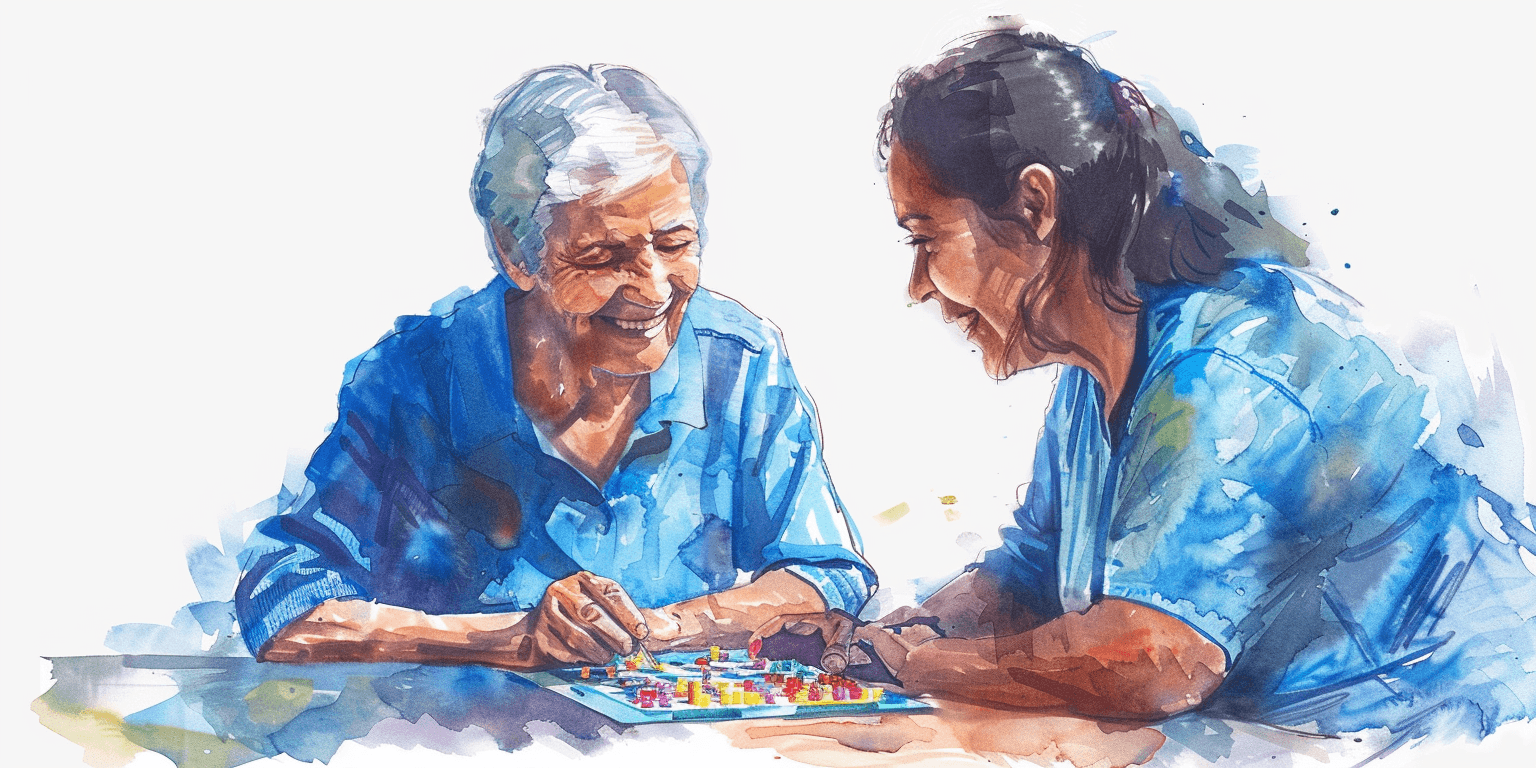

Stay Sharp, Stay Happy: Fun ways to keep our mind active as we age!



Neelam Dabholkar, MBA
GEt started for free
Better care starts with Clara.
Find, hire, and pay top-notch caregivers without the headache for a price that fits your budget.


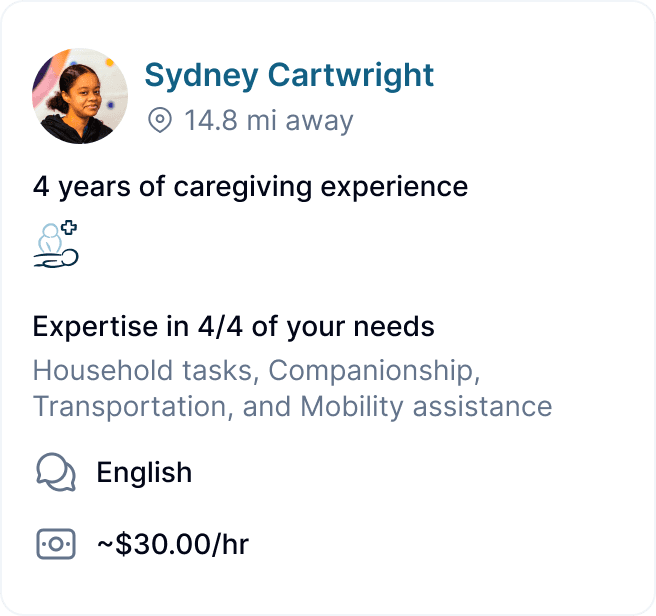
GEt started for free
Better care starts with Clara.
Find, hire, and pay top-notch caregivers without the headache for a price that fits your budget.



GEt started for free
Better care starts with Clara.
Find, hire, and pay top-notch caregivers without the headache for a price that fits your budget.

